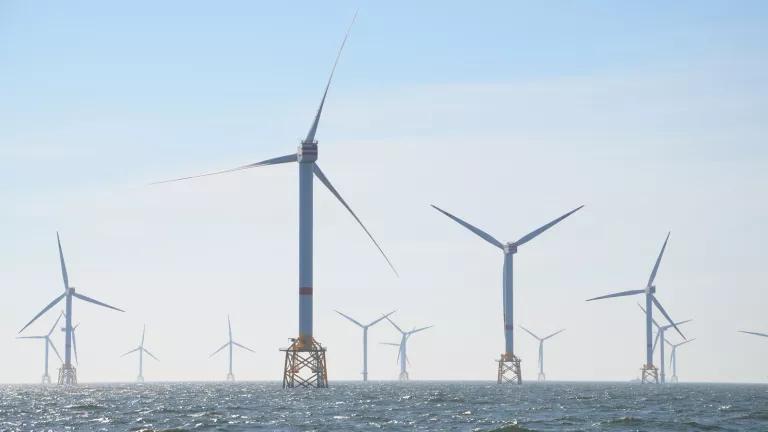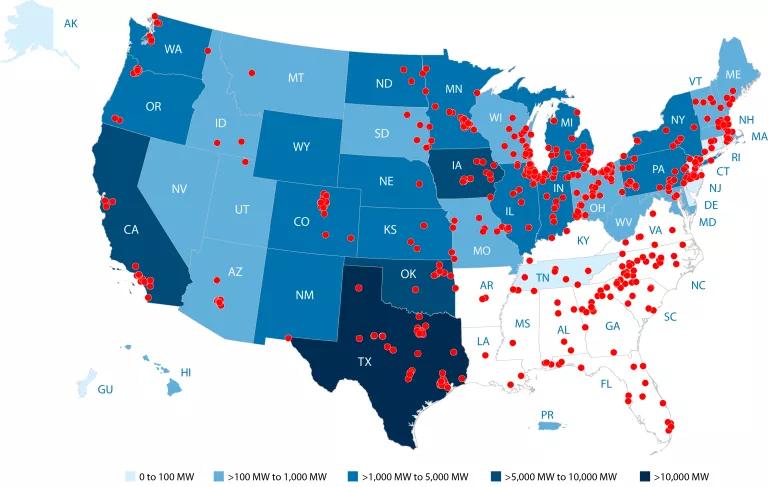Smart Policies Can Energize Offshore Wind Power in Southeast

This post was co-authored by Katie Southworth.
While much of the rest of the country has reaped the tremendous benefits of wind power—the good jobs, the attractive energy prices, the important hedge against climate change, and the cleaner air for our kids to breathe—we in the Southeast have been slow to take advantage. Most of our on-land wind speeds at current turbine heights are weak at best and our utilities tend to favor coal over clean energy. Thankfully, though, with the highly successful auction on Thursday of a federal offshore wind energy area (WEA) 24 nautical miles east of Kitty Hawk, North Carolina, all that might be about to change.
Now that developer Avangrid Renewables has won the auction—after an impressive 17 rounds of bidding against three other developers, despite what can only be called an uncertain federal and state policy environment—it has the rights to assemble plans to build offshore wind power projects in the WEA, pending a number of approvals and permits, and perhaps most importantly, pending long-term commitments from utilities (and, potentially, other large energy consumers, like universities and large corporations) to purchase the electricity that those wind power projects will produce. All that can happen if our state policymakers—our legislators, our governors, our utility commissioners—decide to match the initiative already shown by private developers and the federal government. (Over the last eight years, the feds have put in place an ambitious strategy to help the country take advantage of our significant offshore wind power potential.)
By embracing responsibly sited offshore wind power, we in the Southeast have little to lose and a lot to gain.
The plain fact is that the Southeast’s offshore wind power resources are enormous. But to take advantage of these resources, we must ensure there’s a market for the energy wind power projects can produce. Federal waters off of Virginia, North Carolina, South Carolina, and Georgia, collectively, represent a full “45% of the total East Coast resource,” according to U.S. Department of Energy researchers. So strong are the Southeast’s offshore winds that they could, all on their own, eventually power more than 157 million homes. (Projects in the Kitty Hawk WEA area alone could power more than 500,000.) But the technology’s up-front costs are high. In order to realize this potential, project developers need the kind of market certainty that lets financiers know it’s worth their while to invest.
States (and the federal government, too) have a number of tools at their disposal to do just that. This summer, for instance, Massachusetts enacted legislation that requires utilities to get 1,600 megawatts of offshore wind power by 2027. New York has committed to at least 2,400 megawatts by 2030. Maryland’s Offshore Wind Energy Act of 2013 creates what’s called a carve-out within in the state’s renewable energy standard—kind of a standard within the larger standard specifically for offshore wind power—meaning, again, utilities have certain mandates to fulfill. The federal government can also incentivize offshore wind power by passing legislation Delaware Senator Tom Carper will soon introduce to extend federal tax credits for offshore wind energy investments and production. And state utility commissions can incentivize offshore wind development by incorporating offshore wind resources into modeling used within integrated resource planning (IRP) dockets.
That’s just the start, of course. European governments have pioneered a host of policies that have not only incentivized offshore wind power development, but have also spurred tremendous economies of scale, catalyzed technological innovations such as the new, super-powerful 8-megawatt turbines now being deployed, and have increased competition in the marketplace. So well are these policies working that, in the first half of 2016 alone, offshore wind power’s global levelized cost of electricity dropped by an astounding 22 percent, with some projects increasingly cost-competitive with new fossil fuel projects on a levelized-cost basis.
The potential advantages of moving forward with offshore wind are startlingly good. Take jobs, for instance. The U.S. Department of Energy estimates that in North Carolina alone, offshore wind power can create as many as 1,450 new jobs by 2022; 10 times that many are possible in the state by 2050. In all, by mid-century, nationwide, offshore wind power can create 160,000 good jobs, both in the nation’s coastal regions and its interior.
For North Carolina and the Southeast, there are advantages to ramping up responsibly sited offshore wind power now, rather than waiting until the technology is better established in other parts of the Atlantic coast. Industry first movers are often rewarded with manufacturing facilities and other crucial elements of the offshore wind power supply chain, which has yet to fully establish itself in this country. (Let’s not forget that our region is already home to dozens of wind power-related manufacturing facilities [see map] that, with the advent of offshore wind power, could potentially have a new market into which they could sell their products.)

Manufacturing costs are often lower in our region than in the Northeast and Mid-Atlantic, making the Southeast attractive to companies hoping to keep their costs low. As researchers from the National Renewable Energy Laboratory wrote in a 2015 report, “If there is enough wind power deployed to support a robust supply chain for offshore wind [in the Southeast], the region would experience greater economic growth and perhaps vast improvements in infrastructure.”
Jobs are not all offshore wind power has to offer, of course. Because offshore wind power produces the most electricity when it’s needed most—on hot summer afternoons and cold winter days and nights—the pollution-free technology pairs nicely with solar generation and other sources to improve grid reliability. And because the most polluting power plants come online at these peak times, using available offshore wind power instead can reduce the number of asthma attacks, respiratory diseases, cancers, and heart attacks that result from power plant pollution, and cut the significant costs these illnesses impose on us taxpayers.
All of which is to say that offshore wind power’s benefits are real and substantial. With developers knocking on our doors, the question now is whether North Carolina’s and the Southeast’s leaders will do what it takes to improve our health and to create the jobs and power projects of the future. Will they advantage our region, or let this opportunity slip by? Developers and policymakers in the Northeast and Mid-Atlantic, the Great Lakes, California, and Hawaii are already fast at work on ramping up offshore wind power. It’s time North Carolina and the rest of the Southeast create the policies our states need to step up.




